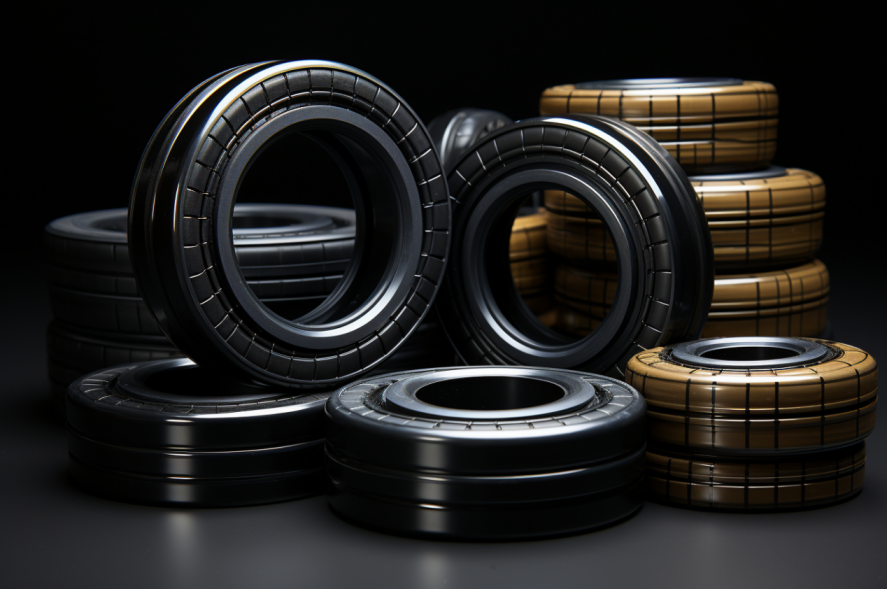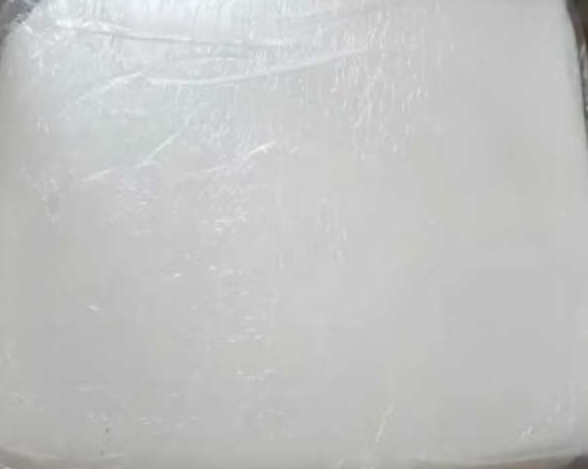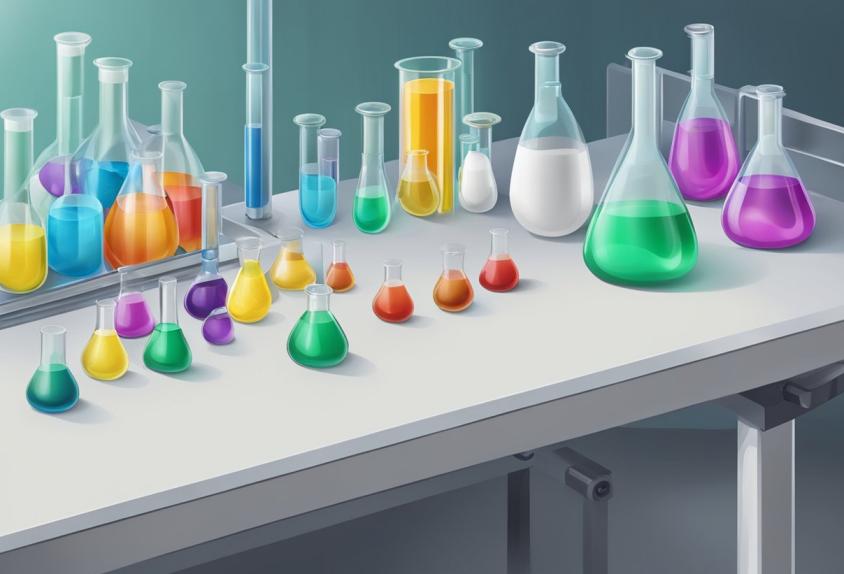Chlorinated Butyl Rubber: Best Solutions of Modern Industry
29/11/2024
In the vast and evolving realm of contemporary industry, the demand for materials capable of withstanding rigorous environments, while maintaining exceptional durability and flexibility, has escalated to unprecedented levels. Among these robust, high-performance materials, chlorinated butyl rubber, often abbreviated as CIIR, emerges as a standout option due to its remarkable blend of properties and versatile applications across numerous sectors. What specific characteristics make chlorinated butyl rubber an ideal choice for modern industrial solutions? And how does this material influence and potentially transform the future of various industries, from advanced medical technology to tire production?

Examining Chlorinated Butyl Rubber: A Specialized Synthetic Material with Remarkable Traits
Defining Chlorinated Butyl Rubber: What Sets It Apart?
Chlorinated butyl rubber, commonly known by the shorthand CIIR, is a uniquely adapted variant of traditional butyl rubber, having undergone a meticulous chlorination process to enhance its attributes. In particular, CIIR 1338 is manufactured by introducing chlorine into a copolymer structure derived from the combination of isobutylene and isoprene. This modified structure, featuring chlorinated copolymer chains, is distinguished by its notably low Mooney viscosity, facilitating ease of processing while ensuring robust elasticity and resilience. This specific molecular structure grants CIIR the ability to perform extraordinarily well in challenging conditions, securing its position as an ideal solution for a broad spectrum of industrial needs.
Exceptional Qualities of Chlorinated Butyl Rubber
The molecular arrangement and chemical composition of chlorinated butyl rubber afford it several noteworthy qualities:
Outstanding Air Retention: The inherent impermeability of CIIR renders it an optimal choice for applications demanding airtight sealing, such as tire inner linings and air conditioning systems.
Resistance to Chemicals and Weather: With impressive durability against chemical exposure and weather elements, chlorinated butyl rubber remains reliable in outdoor and industrial settings.
Broad Temperature Tolerance: CIIR maintains its flexibility across high and low temperatures, an essential quality for industries with exposure to variable or extreme climates.
Minimal Moisture Absorption: The composition of CIIR minimizes water permeability, making it highly suitable for applications requiring insulation or sealing properties.
Diverse Industrial Applications of Chlorinated Butyl Rubber
Chlorinated Butyl Rubber in Tire Manufacturing
One of the most prominent applications of CIIR is found in tire manufacturing, where the rubber’s superior airtight properties are harnessed in the inner layers of tires, enabling the consistent retention of air pressure over extended durations. This characteristic not only prolongs tire life but also improves safety by mitigating the risk of pressure loss. Given the continuous global rise in vehicle demand, particularly in emerging markets, the reliance on CIIR in tire production is expected to maintain an upward trend.
Medical Applications of Chlorinated Butyl Rubber
The hypoallergenic qualities of chlorinated butyl rubber, alongside its resistance to moisture and bacterial growth, render it an effective option for medical and pharmaceutical applications. It is widely utilized in the production of items such as vial stoppers, syringe plungers, and other sterile pharmaceutical packaging materials. Its chemical stability further ensures that it can safely interact with medications and other sensitive substances without compromising efficacy.

Sealing and Gasket Solutions for Construction and Engineering
In the fields of construction and engineering, where durable sealing and resistance to chemicals are crucial, CIIR is frequently applied in gaskets and other sealing mechanisms. Its longevity and ability to withstand environmental challenges make it a preferred choice in construction projects exposed to harsh elements.
How Chlorinated Butyl Rubber Boosts Product Longevity and Efficiency
Enhanced Air Retention Capabilities
Chlorinated butyl rubber excels in its capacity to retain air more effectively than alternative rubber types, which proves especially beneficial in contexts where airtightness is paramount. In tire manufacturing, for instance, the low permeability of CIIR prevents gradual air leakage, thereby supporting extended tire life and consistent performance. In refrigeration and air conditioning applications, its use helps prevent coolant leaks, which in turn enhances the energy efficiency and reliability of these appliances.
Ensuring Reliability and Safety Standards
The low chemical reactivity of chlorinated butyl rubber is a critical asset for applications where contamination risks must be minimized, as in food-grade and pharmaceutical contexts. Furthermore, its hypoallergenic properties help reduce the likelihood of adverse reactions, a vital aspect in medical scenarios where patient safety cannot be compromised. CIIR also demonstrates stability under high-temperature conditions, making it suitable for environments where heat resistance is essential.
Current Market Trends and Outlook for Chlorinated Butyl Rubber
Industry Preferences and Emerging Trends
The demand for chlorinated butyl rubber is continuously rising, with manufacturers showing a growing preference for CIIR owing to its unique combination of beneficial properties. Leading suppliers like CHEMBROAD, a recognized name in the CIIR industry, report increasing customer interest in CIIR products that provide air retention, chemical resistance, and thermal stability. Moreover, the role of CIIR in creating sustainable and energy-efficient solutions contributes to its expanding market, particularly in applications such as refrigeration and building materials, where performance impacts environmental sustainability.
Addressing Safety and Environmental Considerations with Chlorinated Butyl Rubber
Safety Protocols in Manufacturing and Application
Although chlorinated butyl rubber is generally deemed safe, certain safety protocols should be observed during its chlorination and handling processes to avoid potential health hazards. Once processed and incorporated into products, however, CIIR becomes stable, posing minimal risk and making it a dependable choice for industries that prioritize safety, such as pharmaceuticals, food packaging, and medical device manufacturing.
Environmental Implications and Recycling Possibilities
With a growing focus on sustainability across industries, the environmental impact of chlorinated butyl rubber is increasingly scrutinized. Recycling CIIR currently poses challenges due to its chemical structure, though ongoing research aims to enhance its recyclability and reduce its environmental footprint. Suppliers like CHEMBROAD are exploring environmentally conscious production practices to mitigate the ecological impact of CIIR production, ensuring that industry needs are met responsibly.
Innovations and Future Developments in Chlorinated Butyl Rubber
Pioneering Innovations in Chlorinated Butyl Rubber
Research in the field of chlorinated butyl rubber continues to focus on refining its properties and broadening its range of applications. Current innovations include efforts to improve CIIR’s compatibility with other materials, introduce environmentally friendly manufacturing techniques, and enhance the recyclability of CIIR products. Progress in material sciences has led to the creation of CIIR compounds that retain efficacy at elevated temperatures, expanding their use in high-heat environments, such as automotive and industrial machinery.

New Potential Applications in Emerging Sectors
As research progresses, chlorinated butyl rubber is expected to find utility in cutting-edge fields, such as renewable energy, where durable and efficient sealing materials are essential for optimizing the performance of energy-efficient equipment, like wind turbines and solar panels. Additionally, CIIR’s compatibility with advanced materials is being explored, potentially leading to hybrid applications that leverage the strengths of multiple materials for even more versatile industrial uses.
Conclusion: Chlorinated Butyl Rubber as a Cornerstone of Contemporary Industry
In a world increasingly dependent on sophisticated materials to address complex industrial challenges, chlorinated butyl rubber serves as a foundational component in manufacturing and engineering. With applications ranging from the automotive and construction sectors to critical medical and pharmaceutical fields, CIIR presents an exceptional mix of air retention, chemical resilience, and durability. As new developments emerge and the industrial landscape advances, chlorinated butyl rubber is anticipated to remain a favored choice, supported by suppliers like CHEMBROAD, who strive to meet the mounting demand for this versatile material.
The future for chlorinated butyl rubber appears promising, with continuous innovations poised to enhance its performance and sustainability. For industries prioritizing both reliability and adaptability, chlorinated butyl rubber remains indispensable, embodying the pinnacle of modern synthetic materials for applications that span a vast array of sectors.




